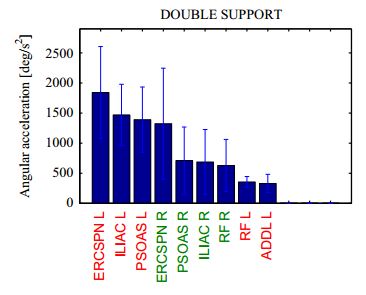Journal article accepted in Journal of Biomechanics:
Contributions of individual muscles to the sagittal- and frontal-plane angular accelerations of the trunk in walking.
This study was conducted to analyze the unimpaired control of the trunk during walking. Studying the unimpaired control of the trunk reveals characteristics of good control. These characteristics can be pursued in the rehabilitation of impaired control. Impaired control of the trunk during walking is associated with aging and many movement disorders. This is a concern as it is considered to increase fall risk. Muscles that contribute to the trunk control in normal walking may also contribute to it under perturbation circumstances, attempting to prevent an impending fall. Knowledge of such muscles can be used to rehabilitate impaired control of the trunk. Here, angular accelerations of the trunk induced by individual muscles, in the sagittal and frontal planes, were calculated using 3D muscle-driven simulations of seven young healthy subjects walking at free speed. Analysis of the simulations demonstrated that the abdominal and back muscles displayed large contributions throughout the gait cycle both in the sagittal and frontal planes. Proximal lower-limb muscles contributed more than distal muscles in the sagittal plane, while both proximal and distal muscles showed large contributions in the frontal plane. Along with the stance-limb muscles, the swing-limb muscles also exhibited considerable contribution. The gluteus medius was found to be an important individual frontal-plane control muscle; enhancing its function in pathologies could ameliorate gait by attenuating trunk sway. In addition, since gravity appreciably accelerated the trunk in the frontal plane, it may engender excessive trunk sway in pathologies. PDF




